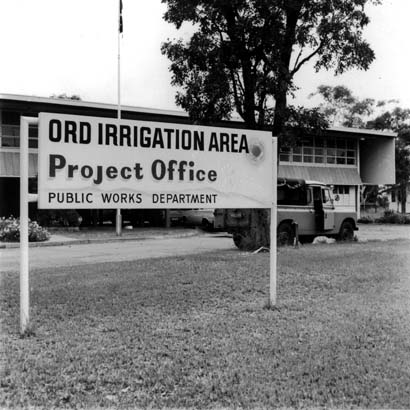|
The Ord River
The Ord River Project in the Kimberley was designed to prevent seasonal flooding and to store water for irrigating large areas subject to drought. The agricultural potential for the region was
observed by the pastoralist M.V. Durack as early as the 1920s. Plans were formed for the damming of the Ord River and for the development of 72,000 hectares of irrigated farmland by 1945.
After more than two decades of experimental farming at the Kimberley Research Station, the Kununnurra Diversion Dam, was finally completed in
1967. It allowed for the cultivation of the first irrigated farmland. Kununurra town was built nearby as the service and residential
centre and a larger dam was built 25 miles south of Kununurra in 1970-72. It holds the main reservoir (Lake Argyle) for irrigation and possibly for eventual hydroelectric power generation.
The main crop projected for the area was cotton, but this was abandoned by 1974 due to insect pests.
Since then various other crops have been experimented with, but without much success. By the 1980s only ten percent of the possible irrigation area was under
cultivation and the Ord River Irrigation Scheme had become Australia's most costly and controversial irrigation project.
|










